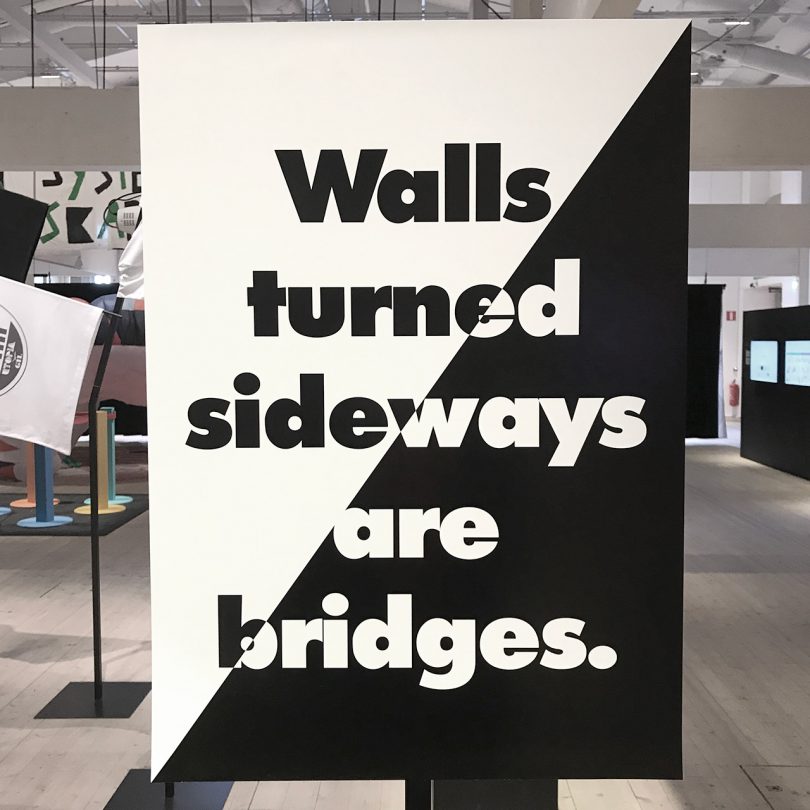An exhibition at the Swedish Centre for Architecture and Design entitled Norm Form examines the unequal power structures caused by gender, cross-gender identity or expression, ethnic origin, physical functionality, sexual orientation, religion, faith, age, social class and what the curator rather elegantly titles ‘family constellations’ – and examines the power of design to highlight or even rebalance them.
Curated by Karin Ehrnberger, Camilla Andersson, Maja Gunn, the first showcase was of products that are designed differently by gender from those for babies all the way up to adults – the result was quite shocking, both in terms of how young gender stereotypes are forced onto our children and how many products are needlessly gendered. “Have you ever wondered why ladies and men’s bikes look different?,” says a statement from the museum. “Or why a drill and a mixer have completely different looks? This groundbreaking showcase contains works by some fifty designers who reveal the hidden messages that objects around us convey and give you tools to undermine them.”
By reversing the visual cues on a drill and a hand blender the exhibition really started to unpick some of the bias encoded into these everyday objects. The designer’s research found that the left-hand object was identified as a “drill for women” and therefore capable of carrying out the same tasks as a traditional “male” drill, despite nothing more than the design of its outer casing being changed. The exhibition also pointed out that IKEA’s textiles are given traditional girl’s names while the Swedish brand’s office chairs are named after boys.
The label next to these objects, and those above, says, “The products on the podium are examples of how the hetero, two-gender and whiteness norm is reproduced and maintained in the physical environment around us.” This collection of “nude” items – one even described as “universal” – which were clearly all designed for white skin was particularly striking.
In 2011, Iman Aldebe was tasked with designing a veil to be worn with the Swedish police uniform enabling Muslim policewomen to meet the requirements of both their job and their religion. Since then she has designed modest clothing for various professions opening the doors of more uniformed professions to Muslim women and also paving the way for women wearing veils to be a positive symbol in Swedish society, overcoming preconceptions of “oppressed women living outside society.” As the curator put it, she wants to show that “they are active women with a backbone who want to stand up for their cultural background.”
A powerful comparative piece showed what male rectal examinations would feel like if they were conducted in an equivalent way to female cervical examinations – the vulnerability of the position adopted is palpable to members of either gender.
Originally produced for an event at London’s Royal College of Art, a showcase of placards and t-shirts used quotes from citizen rights activist Angela Davis adapted by artists Sepidar Hosseini and George Chamoun to reflect current issues in Swedish culture.
Other exhibits included new ideas on what dildos could be if they weren’t restricted to heteronormative ideas of “two biological bodies and genitals”; an examination of the ways in which ceramics have been applied within social, political and feminist movements; Castles in the Air (below) – a project that uses sewing circles to get input into how people want to live; and the World White Web – a project by Johanna Burai examining whether whiteness and racism go hand in hand. “Norm Form is an exhibition about design that challenges what is considered normal. Right now there is a strong movement among designers to work normally challenging, the exhibition reflects this endeavor,” says Karin Åberg Waern, director of exhibitions and pedagogy at ArkDes. It felt like an important exhibition that deserved the widest possible audience.
Photography by Katie Treggiden and Peter-Håkansson.
from Design MilkDesign Milk https://design-milk.com/sff18-swedish-norm-form-uses-design-challenge-power-structures/









No comments:
Post a Comment